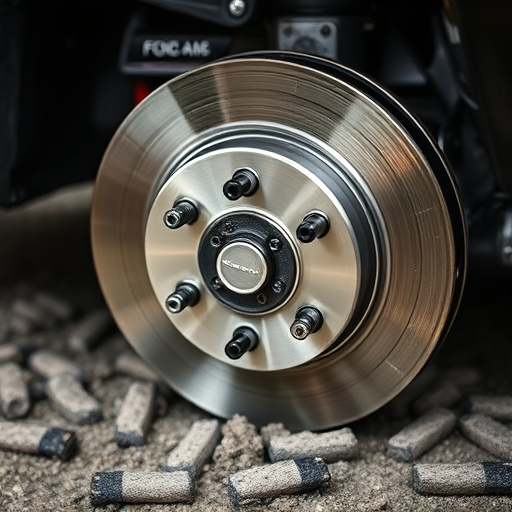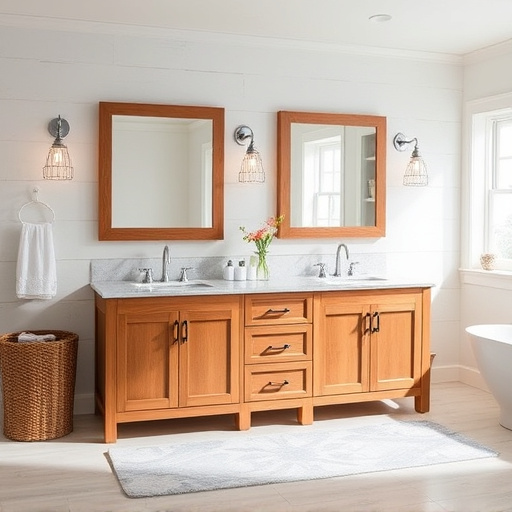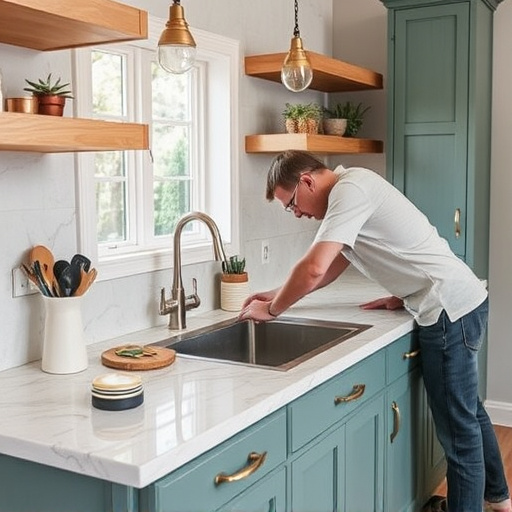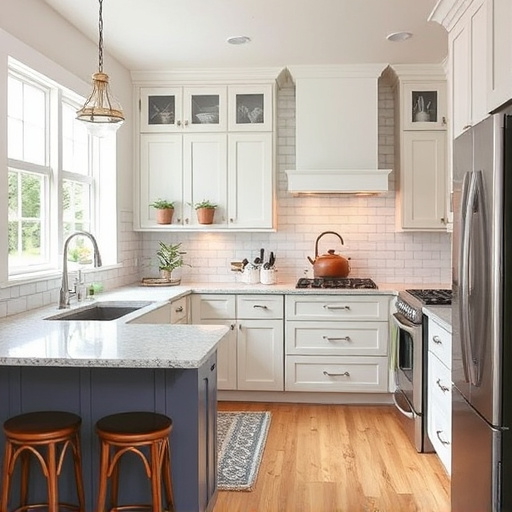Laminate and tile are popular choices for kitchen flooring replacement, each with unique advantages. Laminate offers cost-effectiveness, DIY installation, and a wide range of designs, making it suitable for modern and traditional kitchens. Tile provides durability, moisture resistance, and various styles, catering to diverse décor themes and ensuring longevity. When deciding, consider installation ease, maintenance, and long-term costs, as laminate may be budget-friendly initially but tile can reduce future expenses.
Considering a kitchen flooring replacement? Navigating options between laminate and tile can be overwhelming. This guide breaks down your choices, helping you decide based on durability, style, and maintenance. We’ll explore the advantages and disadvantages of laminate, delve into diverse tile styles, and understand the installation process for both, including cost comparisons. By the end, you’ll be equipped to make an informed decision for your flooring replacement project.
- Understanding Laminate: Advantages and Disadvantages
- Exploring Tile Options: Styles and Durability
- Installation Process: Cost Comparisons and Maintenance Considerations
Understanding Laminate: Advantages and Disadvantages
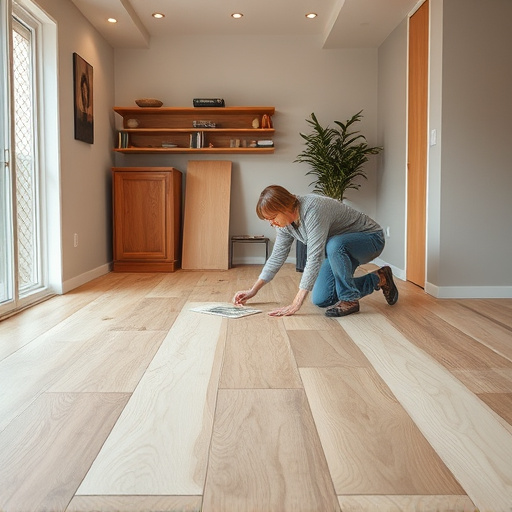
Laminate flooring is a popular choice for kitchen renovations due to its accessibility and affordability. It’s an excellent option for those looking for a cost-effective way to transform their space, offering a wide range of designs that mimic the look of natural wood or stone at a fraction of the price. Installation is relatively simple, often involving laying down a layer of adhesive and pressing the laminate tiles together, making it suitable for DIY enthusiasts or those seeking quick, customized work in a single room or even part of a multiple room remodel.
However, laminate has its drawbacks. It’s not as durable as tile and can be prone to scratches and dents over time, especially in high-traffic areas like kitchens. Laminate is also not water-resistant, which can be a concern for kitchen floors where spills and splashes are common. Despite these disadvantages, laminate remains a preferred choice for many due to its ease of maintenance—it’s easy to clean and doesn’t require extensive care compared to other flooring options. Renovation services often find that laminate is a versatile solution for various kitchen aesthetics, catering to both modern and traditional design preferences.
Exploring Tile Options: Styles and Durability
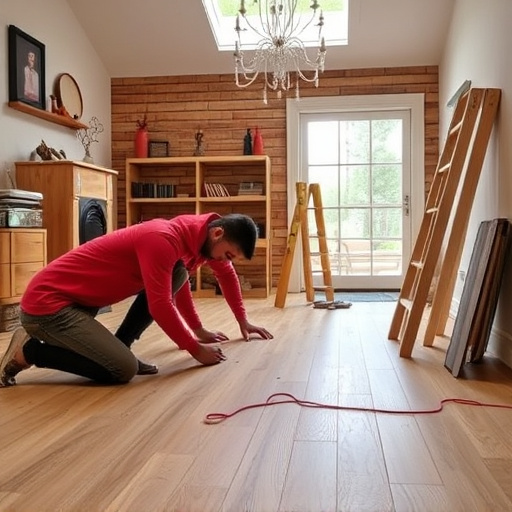
When considering kitchen flooring replacement plans, exploring tile options is a must for those seeking both style and durability. Tile offers an extensive range of styles to suit various tastes and design themes. From classic ceramic tiles to elegant natural stones like marble or slate, there’s a tile option to complement any décor. The versatility of tile allows for creative layouts, from traditional patterns to modern, minimalist designs.
Beyond aesthetics, tile flooring is renowned for its longevity and durability. Properly installed, tile can last for decades with minimal maintenance. It resists scratches, stains, and fading better than many other flooring materials. Moreover, tile provides excellent insulation, making kitchens more comfortable during extreme weather conditions. For those planning customized home renovations or considering home remodeling projects, exploring tile options opens up a world of possibilities for transforming kitchen spaces into stunning, functional areas that enhance the overall value of the property.
Installation Process: Cost Comparisons and Maintenance Considerations
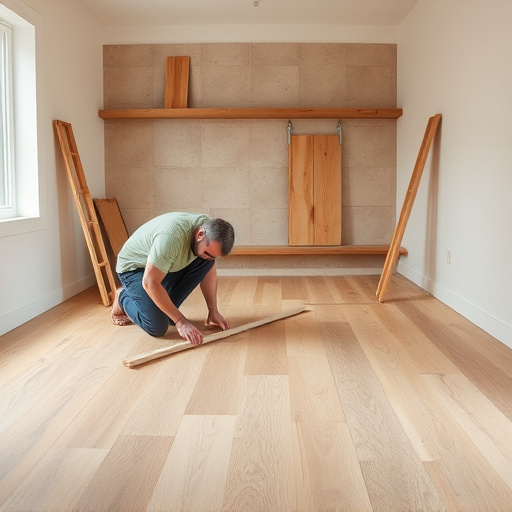
The installation process for laminate and tile flooring differs significantly, with each having its unique advantages. Laminate is known for its ease of installation; it’s a do-it-yourself project that involves laying down pre-cut pieces, interlocking them, and securing them to the subfloor. This method is relatively quick and cost-effective for kitchen remodel projects, especially when compared to tile installation. On the other hand, tile requires more skill and time. It entails setting individual tiles with grout, which can be a more intricate process but offers superior durability.
In terms of cost comparisons, laminate flooring for residential renovations is often more affordable upfront, making it an attractive option for those on a budget. However, over time, tile may prove more economical due to its longevity and the lower maintenance costs associated with it. For bathroom renovations or projects demanding high moisture resistance, tile becomes a top choice. Regular maintenance for both includes sweeping and mopping, but laminate might require less frequent refinishing compared to tile, which can chip or become damaged and needs professional restoration.
When deciding on flooring replacement for your kitchen, both laminate and tile offer viable options. Laminate provides a cost-effective, easy-to-install solution with numerous aesthetic choices. Tile, however, boasts superior durability and water resistance, making it ideal for high-moisture environments. In terms of maintenance, tile may require more upkeep but offers a classic, versatile look that laminate struggles to match. Ultimately, the best choice depends on your budget, design preferences, and specific needs, ensuring your kitchen flooring replacement enhances your space for years to come.




